
Vittorio De Sica was an Italian film director and actor, a leading figure in the neorealist movement.
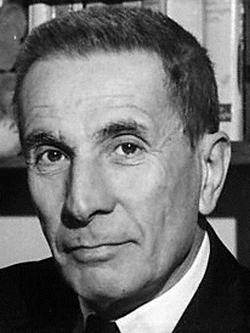
Dino Buzzati-Traverso was an Italian novelist, short story writer, painter and poet, as well as a journalist for Corriere della Sera. His worldwide fame is mostly due to his novel The Tartar Steppe, although he is also known for his well-received collections of short stories.
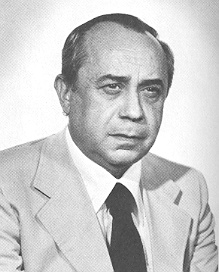
Leonardo Sciascia was an Italian writer, novelist, essayist, playwright, and politician. Some of his works have been made into films, including Porte Aperte, Cadaveri Eccellenti, Todo Modo and Il giorno della civetta.

The Strega Prize is the most prestigious Italian literary award. It has been awarded annually since 1947 for the best work of prose fiction written in the Italian language by an author of any nationality and first published between 1 May of the previous year and 30 April.

The Seven Messengers is a collection of short stories written by Dino Buzzati and published as a book in 1942. It contains nineteen short tales, in which the characters often interact with the presence of the fantastic and/or death, many of which are left unconcluded, leaving the reader in suspense or trying to guess their ending. "The Seven Messengers" is also the name of the book's first short story.
Giorgio Manganelli was an Italian journalist, avant-garde writer, translator and literary critic. A native of Milan, he was one of the leaders of the avant-garde literary movement in Italy in the 1960s, Gruppo 63. He was a baroque and expressionist writer. Manganelli translated Edgar Allan Poe's complete stories and authors like T. S. Eliot, Henry James, Eric Ambler, O. Henry, Ezra Pound, Robert Louis Stevenson, Byron's Manfred and others into Italian. He published an experimental work of fiction, Hilarotragoedia, in 1964, at the time he was a member of the avant-garde Gruppo 63. Centuria, which won the Viareggio Prize is probably his most approachable; it was translated into English in 2005 by Henry Martin. Agli dei ulteriori comprises a linked collection of short pieces including an exchange of letters between Hamlet and the Princess of Cleves and concludes with a fake learned article on the language of the dead. He died in Rome in 1990. He was an atheist. Italo Calvino called him 'a writer unlike any other, an inexhaustible and irresistible inventor in the game of language and ideas'.

Dino Risi was an Italian film director. With Mario Monicelli, Luigi Comencini, Nanni Loy and Ettore Scola, he was one of the masters of commedia all'italiana.

Damiano Damiani was an Italian screenwriter, film director, actor and writer. Poet and director Pier Paolo Pasolini referred to him as "a bitter moralist hungry for old purity", while film critic Paolo Mereghetti said that his style made him "the most American of Italian directors".

Franco Fabrizi was an Italian actor.
The 1949 Giro d'Italia was the 32nd Giro d'Italia, organized and sponsored by the newspaper La Gazzetta dello Sport. The race began on 21 May in Palermo with a stage that stretched 261 km (162 mi) to Catania, finishing in Monza on 12 June after a 267 km (166 mi) stage and a total distance covered of 4,088 km (2,540 mi). The race was won by Fausto Coppi of the Bianchi team, with fellow Italians Gino Bartali and Giordano Cottur coming in second and third respectively.
Giovanni Arpino was an Italian writer and journalist.

Ugo Pirro was an Italian screenwriter and novelist.

Giovanni Raboni was an Italian poet, translator and literary critic.
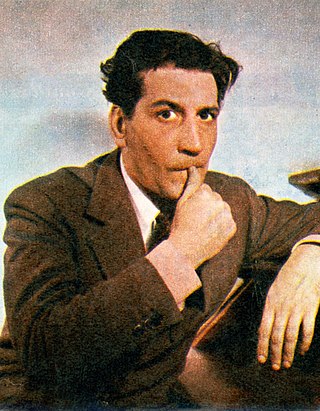
Alberto Bonucci was an Italian film actor and director. He appeared in 53 films between 1950 and 1967.

The commedia sexy all'italiana, also known as commedia scollacciata or commedia erotica all'italiana, is a subgenre of the Italian commedia all'italiana film genre.
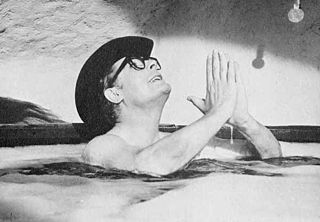
The list of the 100 Italian films to be saved was created with the aim to report "100 films that have changed the collective memory of the country between 1942 and 1978". Film preservation, or film restoration, describes a series of ongoing efforts among film historians, archivists, museums, cinematheques, and non-profit organizations to rescue decaying film stock and preserve the images they contain. In the widest sense, preservation assures that a movie will continue to exist in as close to its original form as possible.

Sessanta racconti is a 1958 short story collection by the Italian writer Dino Buzzati. The first 36 stories had been published previously, while the rest were new. Subjects covered include the horror and surreality of life in a modern city, the existential aspects of advanced technology, metaphysical ideas as well as fantasy realms. The book received the Strega Prize.
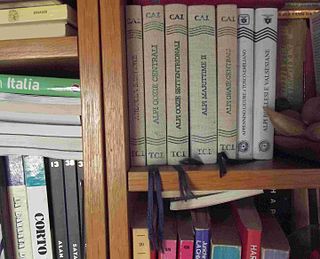
The Guida dei monti d'Italia is a series of guidebooks published in Italy by the Club Alpino Italiano (CAI) along with Touring Club Italiano (TCI) in two periods, the first from 1908 to 1932 and the second from 1934 to 2013.

Gennady Kiselev is a Russian translator, philologist, and linguist.
Pacifico Fiori was an Italian writer, journalist and playwright, renowned particularly as a novelist.















